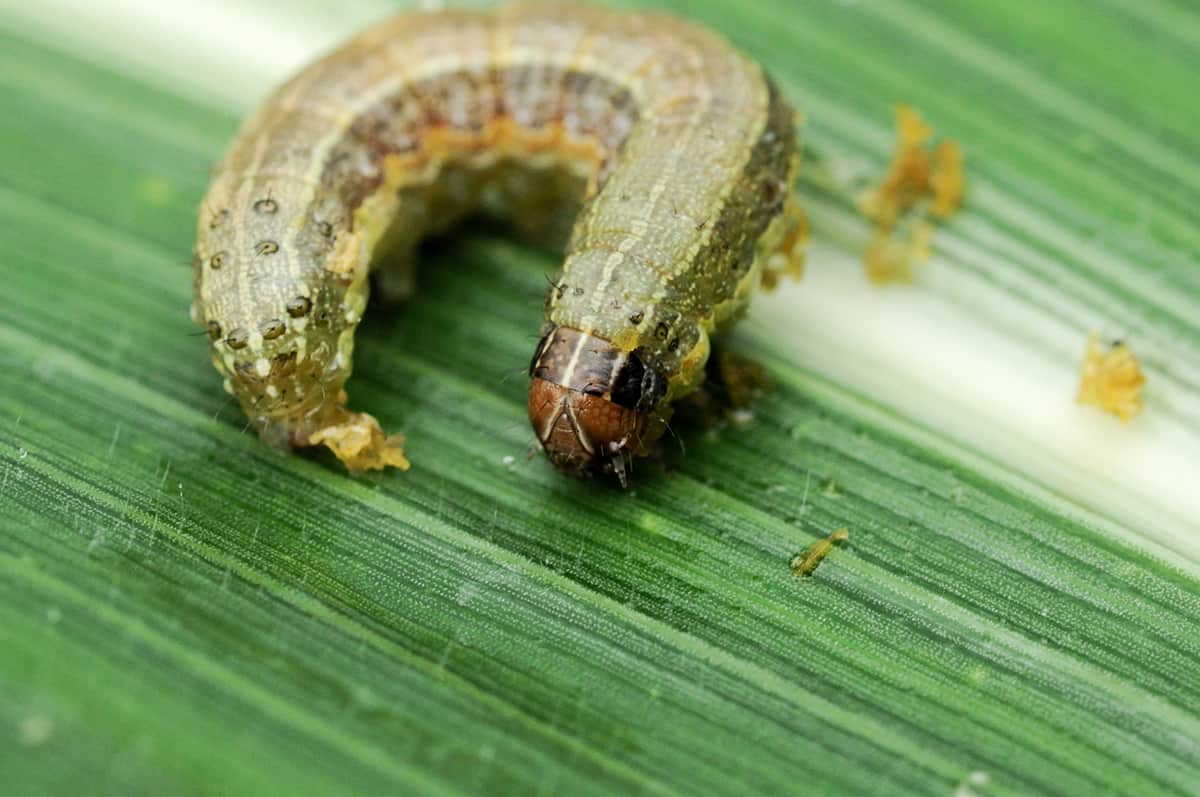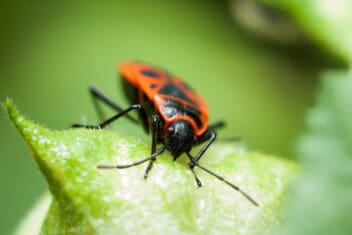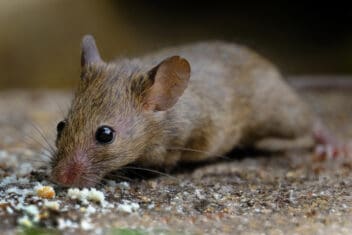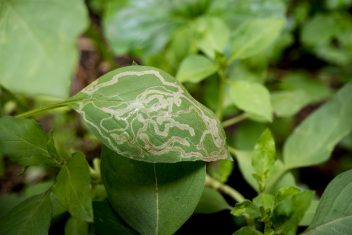Armyworms are destructive pests that eat grass, vegetables, and ornamentals, destroying entire plants quickly. These pests grow into moths within a few weeks, but the larvae stage causes the most damage.
Healthy garden conditions usually keep armyworm populations low. Other times, they get out of control, and gardeners need to know how to eliminate these pests before they decimate a garden.
Our guide shows you how.
What Are Armyworms?
Armyworms aren’t worms. They’re the caterpillars of several moth species. Armyworm caterpillars destroy plants and vegetables in the garden by devouring them.
Armyworms are most active at night, hiding in plants and under grass and debris throughout the day.
These pests are most damaging in their larval stage, eating your lawn and numerous different crops throughout your garden. They got their name because these pests move together in large masses like little armies, attacking plants viciously.
Armyworms particularly like wet conditions. If your area experiences several weeks of cool, wet weather in the spring, it leads to a higher chance of armyworms breeding and spreading.
At the same time, these conditions reduce the activity of predators that typically feed on armyworms, allowing the population to spread without any natural control measures.
What Do Armyworms Eat?
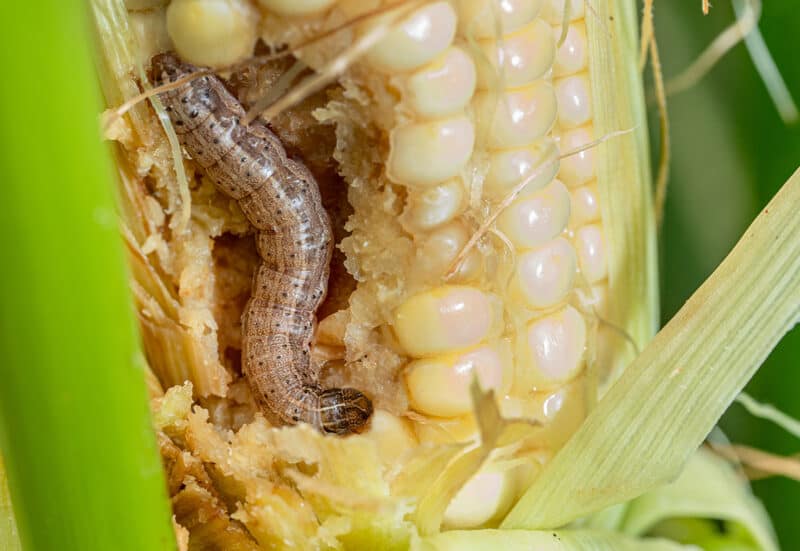
Armyworms are creatures of opportunity, so they eat whatever they find. They prefer pasture crops and lawn grasses, such as:
- Corn
- Oats
- Rye
- Sugarcane
- Wheat
For most home gardeners, these aren’t commonly-grown crops, but that doesn’t mean you’re safe. Armyworms also love all kinds of vegetables, such as:
- Beans
- Cabbage
- Carrots
- Corn
- Celery
- Lettuce
- Onions
- Peas
- Peppers
- Radishes
- Sweet Potatoes
How to Identify Armyworms
The hardest time to identify armyworms is when they’re newly hatched caterpillars. The markings are hard to distinguish and tell apart from other larvae species.
As they get older, the larvae develop distinctive stripes that run the length of their body.
There are several different varieties of armyworm caterpillars, and they all have different markings. Fall armyworms (Spodoptera frugiperda) are brown with yellow stripes. Beet armyworms (Spodoptera exigua) are green with light-colored stripes.
Basically, look for insects with a series of green, yellow, red, or brown stripes going down their sides and backs.
As they get older and develop into moths, the adult moths are gray and mottled, typically with a 1/5 inch wingspan, and small, white dots at the center of each forewing.
The Armyworm Lifecycle
The biggest problem with these pests is that they are prolific and breed rapidly when the conditions are favorable. They lay large clusters of eggs, and they take over gardens in no time.
It starts when the moth lays a cluster of eggs on the leaves of an older plant or on the seedlings. Female moths lay up to 2,000 eggs, so that means they reproduce a ton!
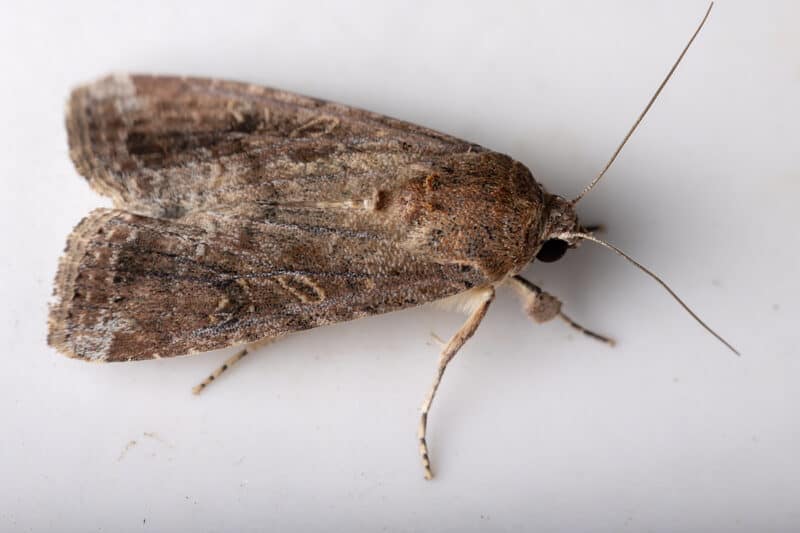
The eggs hatch in 5-10 days and the tiny caterpillars emerge and start to feed for weeks. This larval stage is damaging; they eat all night and destroy plants. After a few weeks, the larvae pupate and turn into adults within 10 days.
The number of generations that happen in your garden depends on where you are in the United States. Northern climates usually have two to three, but gardeners in southern states might have up to six generations.
It’s not uncommon for over three generations of armyworms to be produced in one season. Even if you don’t see it, another generation is always preparing to leave the soil to replace the ones that you just got rid of a few days ago!
Something to note is that eggs and pupae overwinter in areas that have mild winters. They hide in the soil. In warm climates, armyworms are often active all year. They don’t overwinter in cold climates, but they move north when the temperatures increase.
Damage Caused by Armyworms
The first sign of armyworms is often small, brown patches of grass throughout your lawn. They might chew or leave the grass looking ragged, and in some areas, the grass might be eaten all the way to the ground. If you have bare spots on your lawn, armyworms might be the culprit.
One of the easiest ways to distinguish armyworms from other pests is to look at the damage to your garden.
In the spring, the larvae stay close to the ground and feed on grass and other low-growing plants. As they get older and the season progresses, armyworms start to feed on plant leaves and fruit.
One of the characteristic signs of damage caused by armyworms is skeletonized leaves, especially on corn, lettuce, beans, and lettuce leaves.
Armyworms also make shallow holes and gouges in fruit. They prefer corn if it’s available, burying and feeding on the ears. Sometimes, if you pull back the husk from an ear of corn, you’ll find several worms throughout the kernels.
You may also see the feces left behind by these pests.
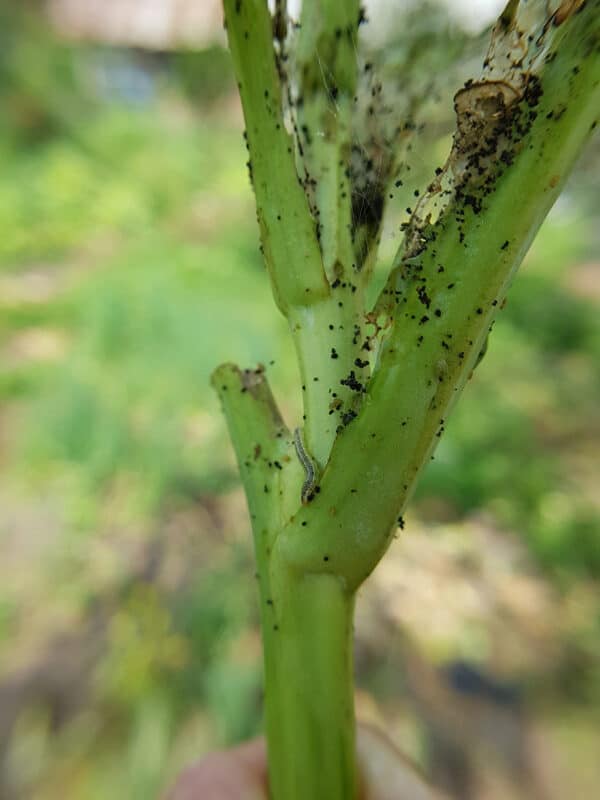
The most common damage caused by armyworms, regardless of the crop they infect, is foliage consumption and destruction.
How to Prevent Armyworms
Prevention is always the best method when dealing with pests. It’s easier to prevent pests from taking over your garden than it is to try to get rid of them.
While armyworms are far from the worse pests your garden might have, you still need to address the situation.
1. Keep the Lawn Mowed
Proper grass control in the spring dramatically decreases the chance of an armyworm outbreak. Moths look for tall grass to lay eggs, so if your grass is kept short, chances are they won’t stop to lay eggs there.
2. Keep Your Grass Healthy
Healthy grass fights off pests easier than sick grass. Use smart grass care methods and keep your grass well-watered.
3. Clean Out Your Garden
Don’t give the larvae places to hide. Clean out your garden regularly, removing debris and other things that they might hide under in the daytime.
How to Get Rid of Armyworms
While dealing with armyworms is frustrating, the good thing to remember is that the outbreaks can be small compared to those of other pests if you keep your garden healthy.
Weather and tons of natural enemies make it easy to keep this pest’s population down to a manageable level, so long as you have the right conditions.
What happens if conditions aren’t right? Here are some tricks to try to help get rid of armyworms in your garden.
1. Encourage Natural Beneficial Enemies
One of the most effective ways to take care of armyworms in your garden is to buy and release or encourage beneficial insects. Ground beetles, parasitic wasps, and parasitic flies are three great options that limit an outbreak.
Another idea is to try and encourage more birds to visit your garden. Birds love to eat armyworms right off of your plants.
While armyworms might be typically controlled by nature, that doesn’t always work, and gardeners need to know practical methods for getting rid of armyworms. Make sure to encourage natural predators and birds; these are key to keeping the population in check.
2. Treat with Bacillus thuringiensis
Bt products are available at most garden nurseries, and they control small armyworm larvae populations without harming the beneficial insects in your garden.
The downside to using this natural pesticide is that it doesn’t last long in your garden or on your grass. It only lasts around 1-2 days before a reapplication is needed.
3. Consider Chemical Insecticides
If you feel comfortable using chemicals to control armyworms, look for an insecticide that it’s effective against armyworms. The benefit of using these products is that they last longer and work against larger populations of armyworms.
If you want to buy chemical insecticides, look for choices that include bifenthrin, carbaryl, esfenvalerate, and other effective chemicals.
